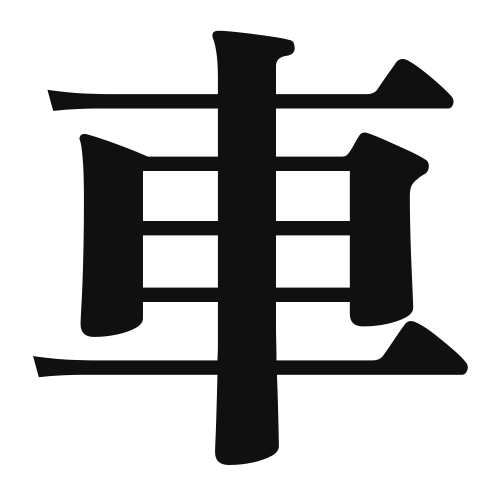1. Overview of Meaning
The kanji “車” (pronounced “sha” or “kuruma”) means “car” or “vehicle.” It represents any kind of wheeled transport, including cars, trucks, and bicycles.
2. Formation and Radicals
The kanji “車” is a pictogram, originally depicting a cart or vehicle. It visually represents the wheels and body of a vehicle. The radical for “車” is also “車,” which is used in other kanji related to vehicles and transportation.
3. Examples of Usage
Common words and phrases that include “車” are:
- 自動車 (じどうしゃ, jidōsha) – automobile
- 電車 (でんしゃ, densha) – train
- 車両 (しゃりょう, sharyō) – vehicle
Example sentences in daily conversation:
- 私の車は青いです。 (わたしのくるまはあおいです。) – My car is blue.
- 明日、車で出かけます。 (あした、くるまででかけます。) – I will go out by car tomorrow.
4. Synonyms and Antonyms
Similar kanji with related meanings include:
- バス (basu) – bus, which is a larger vehicle for public transport.
- トラック (torakku) – truck, which is used for transporting goods.
Antonyms include:
- 徒歩 (とほ, toho) – walking, which represents movement without a vehicle.
5. Cultural and Historical Background
The kanji “車” is deeply rooted in Japanese culture, symbolizing progress and modernization. In traditional Japanese society, carts were essential for trade and transportation.
Proverbs and idiomatic expressions related to “車” include:
- 車の両輪 (くるまのりょうりん, kuruma no ryōrin) – “the two wheels of a car,” meaning two essential elements that work together.
